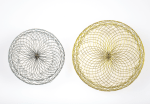Left atrial appendix closure (LAAC) has become a frequent intervention for stroke prevention in patients with atrial fibrillation (AF) that make poor candidates for anticoagulation. However, it presents a complication with negative impact on procedural outcomes which is peridevice leak. To reduce these complications, we use intra-procedural imaging, the transesophageal echocardiogram (TEE) being the most...
FLASH Registry: Mechanical Thrombectomy with FlowTriever
Prospective registry of PTE patients who underwent FlowTriever, with 6 months of follow-up. The clinical relevance of interventional treatment in pulmonary thromboembolism (PTE) is often discussed, and no clinical studies have demonstrated a decrease in “hard” outcomes such as mortality. However, in recent years the use of catheter-directed therapies has increased, either through its main indication,...
Rivaroxaban in Acute Coronary Syndrome
Acute coronary syndromes (ACS) involve high mortality risk, especially ST elevation ACS. Their treatment is based on reperfusion, dual antiplatelet therapy (DAPT) and anticoagulation, with enoxaparin (1 mg/kg twice a day) as the preferred anticoagulant according to the contemporary guidelines. 2.5 mg or 5 mg doses of rivaroxaban might be valid alternative treatments for this...
Should We Use Drug Coated Balloons in Patients with Multivessel Disease?
Recent studies have shown that a drug coated balloons (DCB) based approach resulted non inferior when compared against drug eluting stents (DES) only approach in patients with instent restenosis and de novo lesions in small vessel disease. So far, two international consensuses have reported the use of DCB is feasible and safe to treat native...
BIODEGRADE: Does Stent Design Affect Long-Term Clinical Results?
Recent studies have shown that drug-eluting stents with biodegradable polymer and ultrathin struts are safe and effective, including low rates of stent thrombosis. This is why researchers conducted the BIODEGRADE (Biomatrix and Orsiro Drug-Eluting Stents in Angiographic Result in Patients With Coronary Artery Disease) study, which showed the non-inferiority at 18 months of ultrathin biodegradable polymer...
Plaque Erosion with No Stenting in Acute Coronary Syndrome: Are There Event Predictors to Avoid This Strategy?
Event predictors in patients with plaque erosion and no stenting. A third of all acute coronary syndrome (ACS) cases are caused by plaque erosion. In the initial EROSION study, it was shown that patients with plaque erosion (as evidenced by OCT, with stenosis <70%, TIMI III flow, and asymptomatic) were stabilized without stent implantation (no...
Monotherapy with P2Y12 in Complex Interventions: Less and Less Risky
Monotherapy in patients with complex angioplasty: meta-analysis of 5 randomized studies. Even though prolonged dual antiplatelet therapy (DAPT) might reduce the risk of important ischemic complications, this reduction will come at the expense of a significant increase of bleeding risk, which makes us reassess the cost benefit ratio of this decision. This is also why...
Uncomplicated Type B Aortic Dissection
Mortality Assessment, Interventions and Hospitalization in Patients with Uncomplicated Type B Aortic Dissection with TEVAR. Over 60% of type b aortic dissections present with no complications, such as signs of imminent rupture or already established poor perfusion. Most uncomplicated type b aortic dissections (uTBAD) are managed with medical treatment to control pain and limit the...
Is it Possible to Reduce DAPT Time in Diabetic Patients?
Short-duration dual antiplatelet therapy (DAPT) after percutaneous coronary intervention (PCI) with DES is growing steadily, especially for chronic coronary syndromes. There is also some evidence regarding its use in acute coronary syndrome. However, diabetes is a well-known risk factor for both restenosis and thrombosis, since it involves more complex and longer lesions in vessels that...
Intervention in Patients with Takayasu Arteritis: Rescue Therapy or an Alternative Complementary to Immunosuppressive Therapy?
Takayasu arteritis (TAK) is an uncommon granulomatous large-vessel vasculitis that affects the aorta and its primary branches. The most frequently types of observed vascular compromise are obstructive lesions, and aneurysmal vascular lesions or dissections. In 2021, the American College of Rheumatology recommended not to implement percutaneous intervention (PI) with these patients and only use immunosuppressive...









